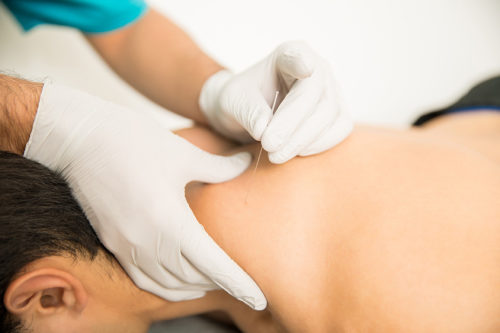Dry needling
Dry needling is a technique used by physical therapists with advanced training to manage muscular pain and movement impairments. Growing in popularity, the technique uses a “dry” needle, one without medication or injection, to penetrate the skin and treats underlying muscular trigger points.
Is dry needling the same as acupuncture?
Dry needling is not acupuncture, despite using a similar needle. Acupuncture originated in China over 5000 years ago and based on the philosophy is that a body can be healed when chi, or healing energy, is released. This use of needles inserted into the body is thought to direct this energy. While new compared to acupuncture, dry needling follows evidence-based guidelines of Western medicine and has been practiced in the United States for the past 35 years.
What is dry needling?
Dry needling is considered to be a safe, relatively painless, and often an effective treatment for patients with certain musculoskeletal conditions such as:
- Neck pain
- Low back pain
- Shoulder pain
- Hip pain
- Headaches

In dry needling, needles are used to release tension from knots and pressure points in muscles.
During dry needling, the physical therapist penetrates the skin with one solid, thin needle at a time. The goal of dry needling is to ‘release’ or ‘inactivate’ trigger points to relieve pain or improve the range of motion. The needle allows a physical therapist to target tissues that are not manually palpable.
The needle is placed in “trigger points” in your muscle, or connective tissues, often knotted or hard muscle. For this reason, this technique is sometimes referred to as trigger point dry needling.
Research supports that dry needling improves pain control, reduces muscle tension, and normalizes dysfunctions of the motor end plates, the sites at which nerve impulses are transmitted to muscles. This can help speed up the patient’s return to active rehabilitation.
In cases when physical therapists use dry needling, it is typically one of the multiple techniques of a broader treatment plan.
Physical therapists who perform dry needling, including those at Welia Health, have completed additional postgraduate education and training specific to this technique.
Questions?
To learn more, call Rehabilitation Services at 320.225.3356 or schedule an appointment using MyChart.

